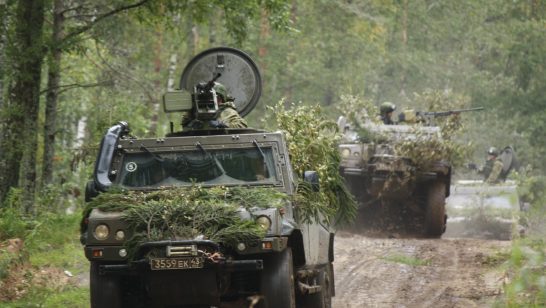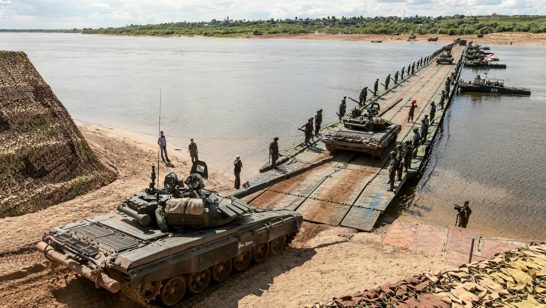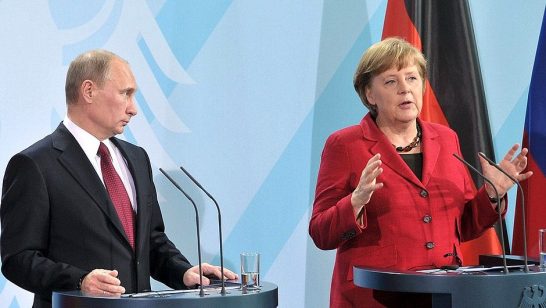
The 1917 October Revolution in Russia was the defining event of the past century – most crucially in war and defence politics. This may seem a counter-intuitive statement given the sheer amount of conflicts and deaths that were to follow, but nonetheless it is worthy of examination.
Though an event internal to Russia, the Revolution simultaneously created two startling new international realities. It effectively closed down the Eastern front of the Great War, and thus initiated the events that lead to the end of the war; and it recreated Russia – even before it became the Soviet Union – as an ideological opponent if not enemy to its former allies. Absent one if not both of those developments, the past hundred years would very likely have looked somewhat different: from the military and diplomatic outcome of the Great War to the Cold War and its aftermath – to this day.
A century on, it is worth examining the long tentacles of the Revolution and questioning its enduring effect.
In October 1917 the war had been raging over three years and all the warring nations across Europe were degraded, in every way: materially, politically, emotionally. The war that had been billed as being over by Christmas 1914 had brought mass death and destruction, with no end in sight. Civilians in both the east and the west were increasingly suffering rationing and hunger, while morale amongst all troops on all fronts was low. Indeed, the initial revolution in Russia, in February 1917, was partly enabled by the half million casualties amassed by the Russian army in the Brusilov Offensive in l916 – considered, somewhat ironically, the greatest military success of the Russian military in the Great War. On the Western Front, French soldiers mutinied early in the year, following yet another failed – or at best inconclusive – battle at Nivelles, while the British were not far from disquiet after yet another blood letting in Passchendaele.
Then the Revolution happened. On November 7 Lenin announced the new regime would end the war, followed by a ceasefire declaration on December 15. It was the unexpected yet pivotal trigger for change, which transformed an endless two front war into a rapidly moving single one. On March 3, 1918 the Treaty of Brest-Litovsk between Russia and Germany was signed, which allowed Germany to release 33 divisions from the Eastern front that were immediately transferred to the Western front, where the Germans mounted their successful Spring Offensive. However, the logistical problems created by their rapid advance, and the lagging morale of their troops, then massively slowed the Germans and allowed the French and British troops, backed up by the incoming US forces, to rally and mount a successful counter attack that ended with the Armistice of November 11.
The end of the Great War was the crucial turning point in world affairs: the 1919 Paris Conference and its resulting treaties sowed the seeds for much of what was to come, from the founding elements of the international system that is still with us today, to the causes of the subsequent Second World War. But in addition, it framed what was to become the crucial ideological confrontation of the 20th century – between the west and Russia, then the Soviet Union.
While the revolutionary Bolshevik party had claimed victory, and most crucially put a government in place, the post Revolution civil war in Russia was still raging in 1919 (it was to end only in 1922). The former Allies refused to recognize the new Bolshevik government, largely because it called for left wing revolutions everywhere. In the immediate aftermath of the long and bloody war, this was not an idle threat: the former constituent states of the Habsburg empire, as well as the defeated Germany, were all in deep disarray, while across most of the former Allied states militant strikes were taking place. In this febrile atmosphere, the Bolshevik government was not invited to the Paris conference – thus it was not party to the defining decisions of the era, even those that affected Russia, mostly in central and Eastern Europe. At the same time it was inciting directly against the states and powers making the decisions. Within this reality the line of division between Russia and the west was clearly laid, and it was to harden remarkably quickly.
The Soviet Union was declared in 1922, and by the late 1920s, following the death of Lenin and the rise of Stalin, it had become transformed into a Marxist-Leninist dictatorship. By this point all hope of rapprochement between the USSR and the west was more or less lost – even though the two opponents were to become allies again in 1941, following the German invasion of the USSR in the Second World War. However, the deep suspicion between the sides remained throughout this joint effort – not least, as far as the west was concerned, because it was the USSR that allowed the Nazis to start the war in 1939 by signing the Ribbentrop-Molotov Treaty that year. On the other hand, there is no doubt the war could not have been won without the immense sacrifice and input of the Soviet military and people.
It was this duality of dislike and dependence that ultimately allowed for the creation of both the postwar international system – including the United Nations, in which the USSR, in contrast to the 1919 Paris treaties, most definitely had a seat at the table and then at the Security Council – and the Cold War. And it is impossible to understand the peculiarities of the UN, its ultimate powerlessness, without understanding it evolved during the Cold War, as both the backdrop for that massive confrontation, and its political arena.
The Cold War divided the world: into groups, ideologies, incomes, interests and wars. While many a conflict occurred for local reasons, many if not most that took place in every corner of the globe during the Cold War was either initiated or overtaken by the two sides and their interests, not least of undermining the other. From Vietnam and Cambodia to the Middle East and Latin America, the alignments, the arms, the outcomes – all were part of the overarching event that was the Cold War. And at the centre of it all were the Warsaw Pact and NATO, glaring at each other across a divided Europe, with fingers hovering over the nuclear buttons.
The deep impact of the Russian Revolution was not only due to force of arms. It was above all a massive ideological shift, with formidable deep-rooted intellectual and cultural foundations. Though its impact was felt imminently in Europe, during and after the Great War, its rapidly spread far and wide as an ideological force – from China and Korea to Cuba. The world as we know it – its cleavages, alliances and ruptures – was forged in the wake of the revolution and then the Cold War.
And there was more: generations of political, diplomatic and military thinkers, on both sides, evolved during the confrontation, and their structural and intellectual concepts linger on to this day – some twenty five years after the Cold War ended. This is the case not only because of a resurgent revanchist Russia, or because of illiberal tendencies in central and Eastern Europe that were instilled in half a century of Soviet rule. It is the case because the core geopolitical realities that made the Cold War possible remain in place: the sheer size of Russia and its deep reserves of intellect, history, capabilities and pride; the economic and democratic heft of the European integration project– which, for all its faults, presented the true alternative to the citizens of the USSR that broke free, and still offers the same to many in the wider region; the vulnerability of the states that lie between Russia and the EU, as symbolized by the annexed Crimea and the ongoing conflict in the Donbass; and finally, the continued existence of NATO: the ultimate creation of the Cold War, the underpinning of Western defence, and the red rag to every Russian instinct.
A century after the Russian Revolution, it may be time to assess these tenets: what was once ideological may now be more reflexive. When Lenin called for Revolution, it was as much for a better life for the Russian masses as against a corrupt Tsarist regime and its cronies. When the west responded to this, it was as much for the liberty of people as against oppression. These were deep, essential issues, which is why the Cold War lasted so long: the military machines and the nuclear weapons underpinned deep ideological differences.
A hundred years on there is no ideology. Disruption of democratic processes, quest for military supremacy or even disputes over international law are not about ideology, only about power play. However, for some years, and definitely since the invasion of Crimea in 2014, Russia and the West have been falling into the pattern of confrontation created by the Cold War and rooted in the October Revolution. This is both unnecessary and dangerous: it is only a path to violent disorder. And so, it is vital, especially for Europe, to make clear that current tensions are not a reversion to the Cold War or a repetition of its patterns: there is no underpinning logic that can justify further escalation. Equally, it is time to sit down and have a serious discussion with Russia: listening to the other side does not mean accepting its narrative – but listening can help diffuse it, not least for the Russian people. And ultimately, it is the people who count: they, not a single tank or cruise missile, brought down the Soviet Union, and they are now increasingly entrapped by the current tensions.
It is time to lay the ghost of the Revolution to rest. Absent ideology, Russia and the West are not doomed to enmity. If nothing else, perhaps they could become just neighbours.
The opinions articulated above represent the views of the author(s), and do not necessarily reflect the position of the European Leadership Network or any of its members. The ELN’s aim is to encourage debates that will help develop Europe’s capacity to address the pressing foreign, defence, and security challenges of our time.



